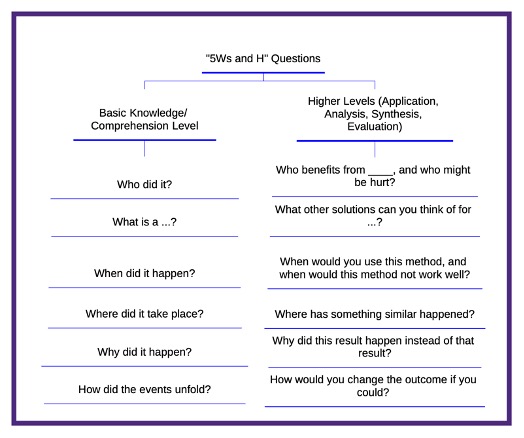Key points:
- Critical thinking should not be separate from and on top of what teachers are doing in the classroom
- How to help students build critical success skills
- 3 lessons on perseverance from Stoffel the honey badger
- For more news on durable skills, visit eSN’s Innovative Teaching hub
Achievement discrepancies among U.S. students remain persistent and troubling–despite decades of targeted interventions and whole-school improvement programs. To make real gains, teachers need to address the underlying problem: the critical thinking gap.
Focusing on core cognitive skills sets students up for success throughout their academic careers. These five critical thinking strategies can help.
Why focus on critical thinking?
Most academic interventions focus on core knowledge and basic skills: Let’s practice two-digit addition. Review the parts of the cell. Learn these vocabulary words. Read these passages for fluency. These kinds of exercises can help students make marginal gains in reading, math, and general content knowledge, but they don’t address the root of the problem: learning how to think and how to learn.
Growing evidence points to the role of critical thinking in educational achievement. Students need to activate higher-order thinking skills and metacognition to effectively master and retain new content knowledge, synthesize it with prior knowledge, and apply it to new scenarios and domains. However, most students are not explicitly taught how to do this.
Colin Seale, author of Thinking Like a Lawyer: A Framework for Teaching Critical Thinking to All Students (Prufrock Press, 2020), noted in an interview with ASCD: “When you start to look at how critical thinking looks in practice in K–12 classrooms, it’s often being treated as a luxury good. You’ll see critical thinking in an after-school mock trial program, or for an honors program that serves 8 percent of the school population, or for the special debate team or the selective entry school.”
Teaching students how to activate critical thinking and metacognition will enable them to learn more efficiently and effectively. Fortunately, that can be done within the context of the existing curriculum. Here are some ways teachers can get started:
1. Integrate critical thinking with content
Critical thinking should not be something that is separate from and on top of everything else teachers are doing in the classroom. For best results, it should be fully integrated with the content that is being taught. Think about the standards you are teaching to. Most will have both a content knowledge component and a thinking component. For example, if the standard requires students to understand the causes of the Revolutionary War, they need to know specific content, but they also need to understand cause-and-effect thinking. Teachers can help students by explicitly calling out the type of thinking required–e.g., defining, classifying, part-to-whole relationships, sequencing, etc.–and making sure students know what that kind of thinking looks like.
2. Give students a framework for thinking
Once students understand the type of thinking required, they need a framework to support it. A visual framework supports the development of critical thinking skills. Making thinking visible and concrete helps students activate the type of thinking required by the task and organize their ideas effectively. While there are tons of graphic organizers out there, it’s most beneficial to have a consistent framework for thinking that spans grade levels and content areas. This supports the growth of automaticity in activating cognitive skills.
3. Make learning active
Models such as project-based learning and inquiry learning have been demonstrated to improve learning outcomes. But you don’t have to upend your entire curriculum or implement a complicated model to make learning more active. Building in time for debate and discussion and collaborative learning activities are simple ways to make learning more active and engaging. For example, students can work together to construct meaning using a thinking map. Look for learning activities that require students to go beyond simple recitation of facts and engage deeply with the content as they solve a problem, develop and defend a point of view, or create something original.
4. Ask better questions–and teach students to ask their own
Increasing the rigor of the questions we are asking is another way to support critical thinking. That means asking questions that go beyond basic knowledge and comprehension to require higher-order thinking skills such as application, analysis, synthesis, and evaluation. (See some examples in the image below.) Even better, teach students how to ask their own questions. After introducing new content, for example, pause for a class brainstorming session where students come up with as many questions as they can, including basic clarification questions and higher-order “why,” “what if,” and ‘what else” kinds of questions. Then, students can work together to start answering some of these questions using the active learning methods above.

5. Get metacognitive
One important aspect of critical thinking is metacognition, or “thinking about one’s own thinking.” Students who are skilled in metacognition are able to recognize how well they understand a concept, where they need extra help or support, and how to apply and adjust learning strategies. Metacognitive skills include planning for learning, monitoring understanding, and evaluating the learning process. Like fundamental cognitive skills such as cause-and-effect or sequencing, metacognitive skills can also be explicitly taught. The questions in the Tree Maps below can help teachers get started.

These essential strategies can be applied across all grades and content areas. When we help students develop fundamental cognitive and metacognitive skills, learning becomes easier–and a lot more fun.
- 6 ways to make math more accessible for multilingual learners - April 4, 2025
- How CTE supports college and career readiness - April 4, 2025
- Understanding why students cheat and use AI: Insights for meaningful assessments - April 3, 2025

